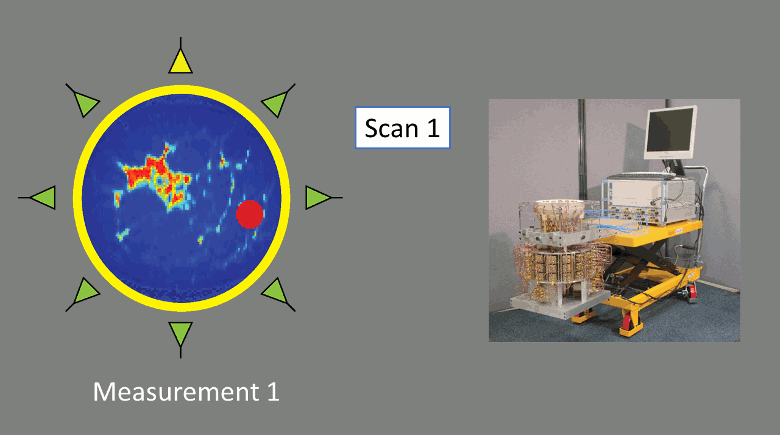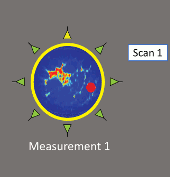
Microwave radar imaging is a breast imaging modality which exploits the contrasting dielectric properties at tissue boundaries to create a representative 3D energy profile. Multistatic radar apertures record scattering at a number of receivers when the target is illuminated by a single transmitter. A single multistatic transmitting element can provide significantly more scattering information than its monostatic (single transmit-receive transducer) counterpart for a particular angle of target illumination. A significant number of transmitting (Tx) and receiving (Rx) antennas are desirable when attempting to create a multistatic microwave radar profile of the breast, however, the density of a physical antenna array is limited by the geometry of antennas operating in the Ultra-Wideband (UWB) bandwidth. In order to overcome these physical constraints, a compound imaging approach is presented. The number of Tx-Rx paths available for imaging are increased by performing a number of breast scans with varying array positions. While the number of receivers for a particular Tx element remains constant, the overall number of propagation channels available for processing are increased.
Recorded signals are applied to a receive beamforming method to produce a compound microwave radar breast profile from a number of array locations. Antenna coupling and skin reflections will remain reasonably consistent for a particular Tx-Rx channel as the aperture is repositioned. This consistency is exploited and the undesirable artefacts which occur from skin reflections and coupling are mitigated using a source separation method prior to image reconstruction. The proposed imaging method is evaluated with phantom data with various skin contour asymmetries as well as challenging tumour positions and sizes. For each imaging scenario outlined in this study, the proposed compound imaging technique clearly detects targets and reduces the levels of undesirable clutter within the resulting 3D energy profile.
Keywords: Multistatic radar, Radar imaging, Microwave imaging, Cancer detection, Medical diagnostic imaging, Skin calibration.

